While dealing with a sales pipeline, terms like “leads,” “prospects,” and “opportunities” are used quite often. For the uninitiated, simply going by their loose meanings can make them sound similar – interchangeable, even.
However, in practice, they have distinct meanings and significance.
Understanding these distinctions is not just about mastering sales jargon; it’s about fine-tuning your approach to potential customers at every stage of their journey. That is why I have crafted this detailed guide to provide a straightforward explanation of each term.
Before that, let’s get you acquainted with an overview of how to manage your leads, prospects, and opportunities with the help of a sales pipeline management tool –
What Is a Lead?
At the very start of the sales process, we encounter what’s known as a lead. But what exactly does that mean?
Simply put, a lead is anyone who shows interest in your company’s products or services in some way. This could be someone who fills out a form on your website, subscribes to your newsletter, or even casually drops their business card for further contact.
Let’s understand this better with an example: Imagine you run a company that sells eco-friendly office supplies. During a local community fair, Alex, an office manager, stops by your booth and signs up for your mailing list. Congratulations, Alex has just become a lead!
However, think of a sales lead as a starting point. You don’t know much about them at this stage—perhaps just a name and a way to get in touch. Depending on their interest and interaction level, you can categorize your leads as –
- Cold Leads: These individuals have shown a basic interest level but haven’t sought more information or engagement.
- Warm Leads: These leads have taken further action that indicates a stronger interest or potential need for your product, such as responding to a survey or downloading a brochure from your site.
- Hot Leads: These are the most engaged leads, showing clear intent to purchase by requesting a demo or pricing information.
In the example above, Alex is a cold lead. So, how do you move forward?
The first step is to initiate contact by sending them information about your products or services, inviting them to a webinar, or learning more about their needs and interests.
Remember, the goal here is to provide value and establish a connection, not to make a hard sell.
There are several sources that a business can use to acquire leads, including:
- Sales intelligence tools
- Surveys
- Inbound marketing
- Live chat
- Advertisements
- Events
- Social media platforms
- Referrals
Once you identify leads that show the most promise or interest, you can allocate your resources more effectively and increase your chances of success in the later stages of the sales process.
Tl;dr: A lead is someone who has shown interest in your company’s products or services. This could manifest in various ways, such as someone filling out a contact form on your website, signing up for your newsletter, or engaging with your social media posts!
How Are Leads Generated?
Generating leads is a crucial step in building the sales pipeline. It involves attracting potential customers to your business and encouraging them to share their contact information.
But how exactly do companies create this initial spark of interest? Let’s break down some common methods:
Content Marketing: This is all about creating valuable content that draws people in. Blogs, eBooks, infographics, and videos can attract attention and encourage viewers to sign up for more information. For example, if you offer a free eBook on sustainable living tips, those who download it are essentially providing their details because they’re interested in what you have to say.
Through CRM Software: CRM software plays a pivotal role in lead generation. It not only helps organize and manage your contacts but can also automate lead capture from various channels.
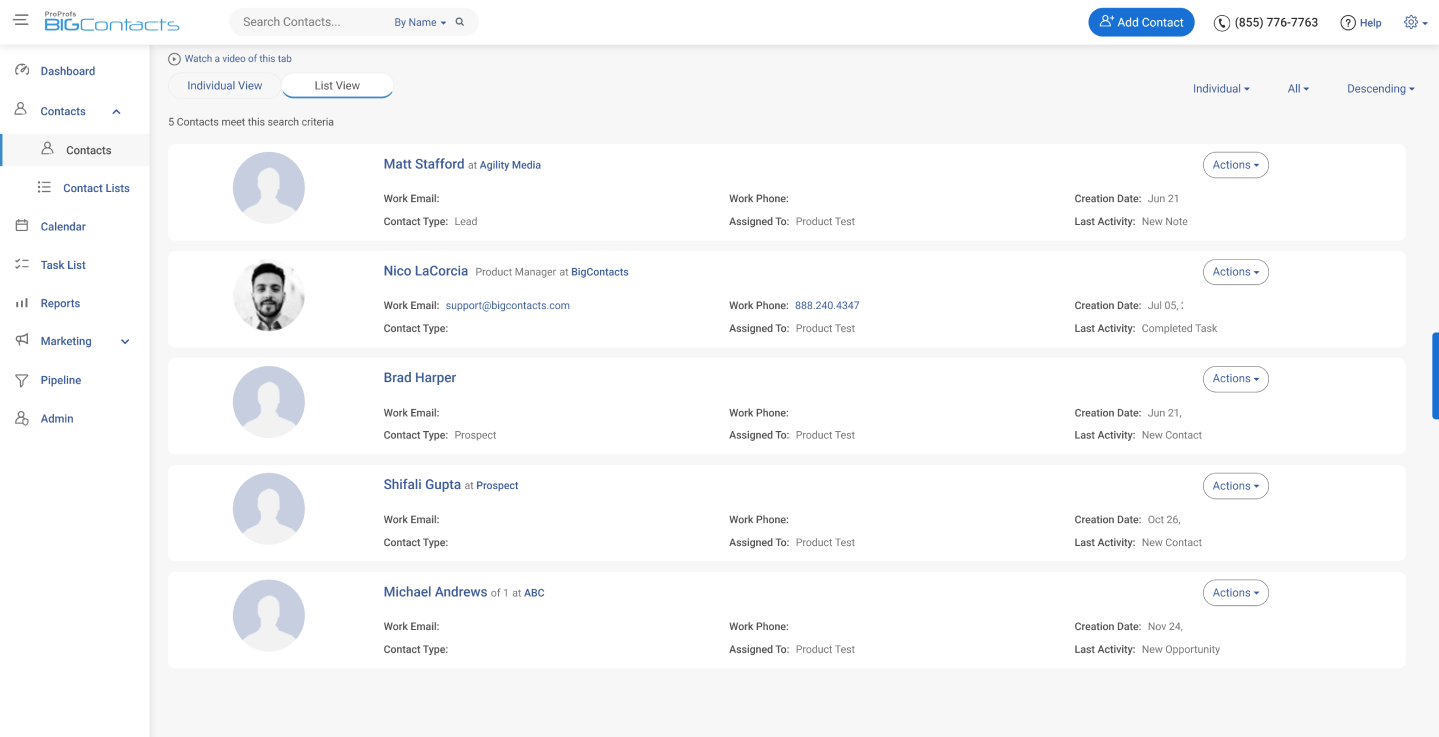
CRM tools analyze interactions and behaviors, helping you identify potential leads and segment them for targeted marketing efforts, making it easier to nurture them until they’re ready to be approached by sales.
Social Media: Platforms like LinkedIn, Twitter, Facebook, and Instagram can be powerful tools for generating leads. By engaging with followers through posts, stories, and ads, companies can direct traffic to their websites or landing pages where visitors can sign up or make inquiries.
Email Marketing: Sending targeted emails through automated email campaigns to individuals who have subscribed to your newsletter or expressed interest in your services can keep them engaged and move them closer to purchasing.
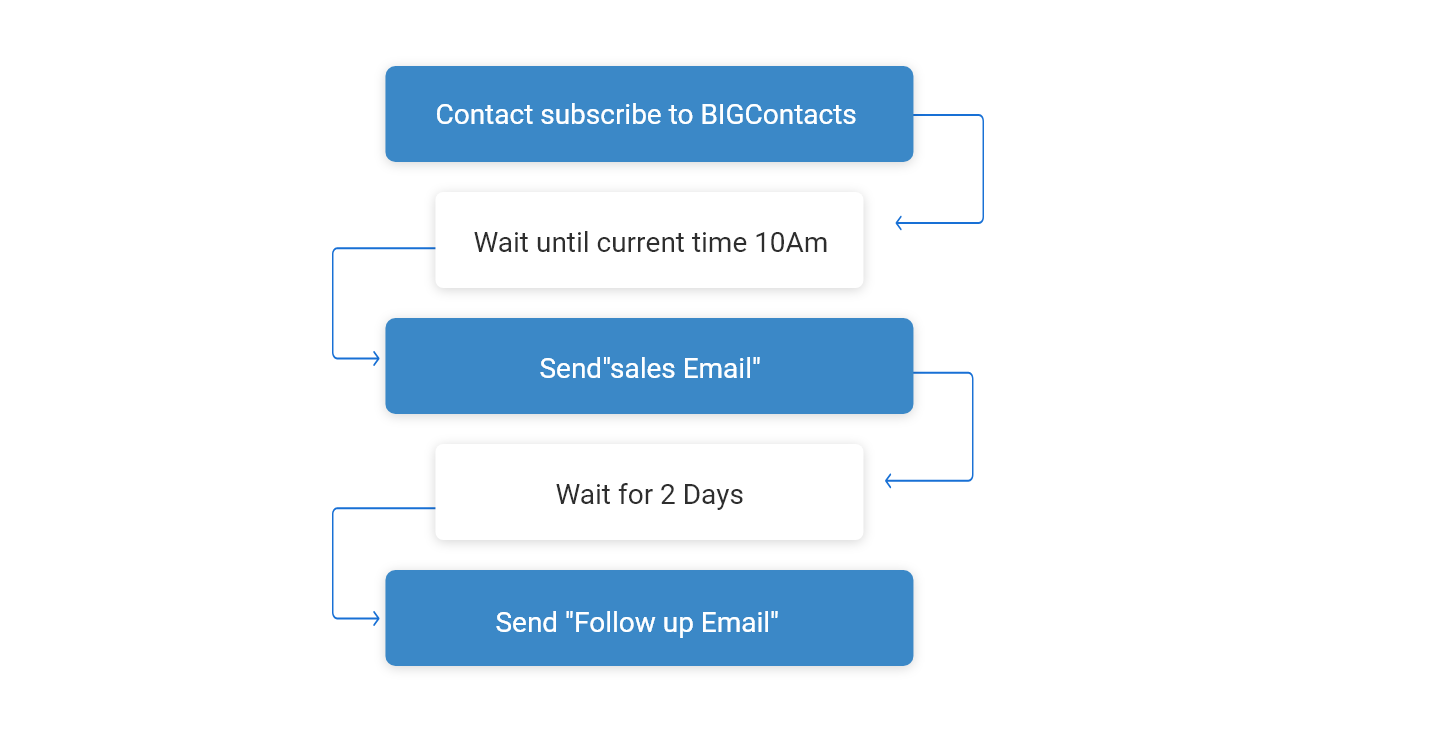
Events and Webinars: Hosting or participating in events and webinars can be a direct way to generate leads. Attendees are often required to register and provide their contact information, which indicates a higher level of interest in your offerings.
SEO and SEM: Search Engine Optimization (SEO) and Search Engine Marketing (SEM) strategies, like technical SEO optimization, improve your website’s visibility for relevant searches. When potential customers search for topics related to your products or services, your website can capture their interest, leading them to engage with your content and possibly convert them into leads.
Referral Programs: Encouraging your current customers to refer friends or colleagues to your business can be an effective way to generate warm leads. People tend to trust recommendations from people they know.
What Is Prospect?
A prospect is a step up from a lead and represents someone who has been qualified as a potential customer. Unlike leads, who have only shown initial interest, prospects are one step ahead in the funnel and have been evaluated and deemed a good fit for what you’re selling.
Prospects match your target audience’s characteristics and have shown a deeper level of engagement with your brand, indicating a higher likelihood of making a purchase.
To transform a lead into a prospect, businesses typically use criteria such as need, budget, authority, and timeline—often referred to as BANT. Here’s what that looks like:
- Budget: They have the financial resources to purchase your solution.
- Authority: The prospect has the decision-making power or influence within their organization to buy your product or service.
- Need: The prospect has a problem or need that your product or service can solve.
- Timeline: There is a reasonable expectation that the prospect will make a purchase within an acceptable timeframe.
For instance, let’s go back to Alex, the office manager who showed interest in eco-friendly office supplies.
After you contact Alex, it becomes clear that his company is actively seeking to overhaul its office supplies within the next three months and has a budget allocated for this. Alex has been identified as having the authority to make purchasing decisions for his office.
This information qualifies Alex as a prospect because he fits the criteria indicating a strong potential for sales conversion.
Once someone is identified as a prospect, the next steps involve deeper engagement tailored to their specific needs and concerns. This could include personalized product demonstrations, detailed proposals, or trial offers.
The communication shifts from general awareness and education to more direct discussions about features, benefits, and pricing.
What Is the Importance of Prospect Nurturing?
Prospect nurturing is a critical phase in the sales process, bridging the gap between initial interest and the final purchase decision. It’s about building relationships and trust with your prospects through consistent, targeted communication tailored to their needs and stage in the buying journey.
Here’s why nurturing your prospects is vital:
- Builds Strong Relationships: Regular and meaningful interactions help develop a deeper connection with your prospects. This relationship-building process is essential for creating trust and loyalty, which are key factors in any buying decision.
- Keeps Your Brand Top of Mind: By continuously engaging with your prospects, you ensure that when the time comes to make a decision, your product or service will be the first they consider.
- Educates and Informs: Prospect nurturing allows you to provide valuable information that educates your potential customers. This process helps them understand how your offering can solve their problems or meet their needs, making them more likely to buy.
- Identifies and Addresses Concerns: Regular interaction with prospects gives you the opportunity to uncover and address any reservations or questions they might have. Solving these issues in advance can smooth the path to a sale.
- Increases Conversion Rates: A well-executed nurturing strategy can lead to higher conversion rates. Prospects who are engaged and informed about the value of your offering are more likely to convert into paying customers.
- Enhances Customer Experience: Prospect nurturing contributes to a positive overall customer experience. By showing that you understand their needs and are committed to providing value, you lay the groundwork for a long-term relationship, whether or not they decide to purchase immediately.
If you need directions on how to go about it, here are some strategies:
Use the information you’ve gathered about your prospects to make your messages relevant to their specific interests and needs. You can use CRM software to organize your contacts by relevance, frequency of interactions, purchase intent, etc., and tailor your marketing approach accordingly.
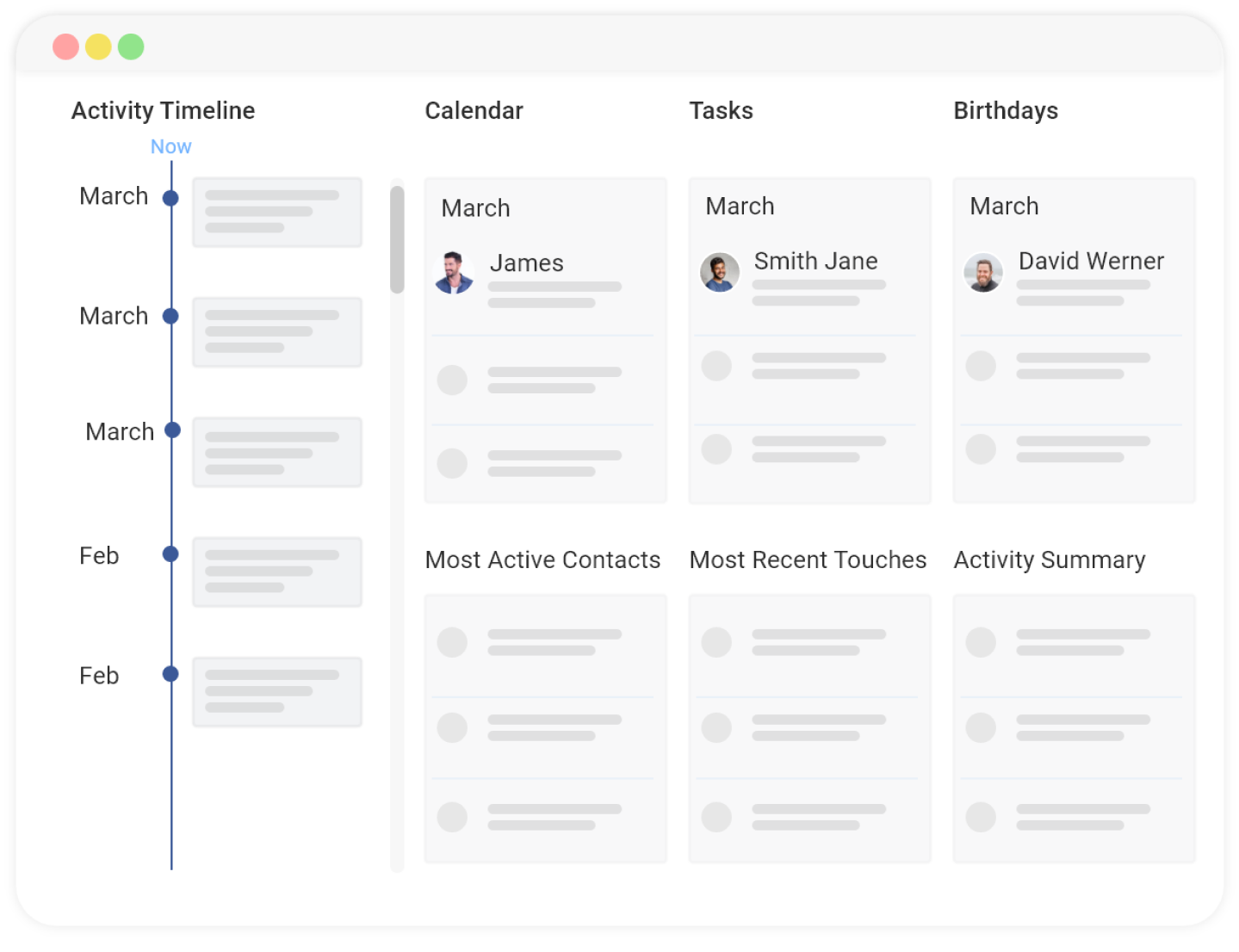
Share content that answers common questions and helps prospects understand your industry and solutions better. This could include blog posts, case studies, whitepapers, or webinars.
Follow up regularly via email or phone to keep the conversation going. These check-ins show that you’re interested in their needs and are ready to assist when they’re ready to move forward.
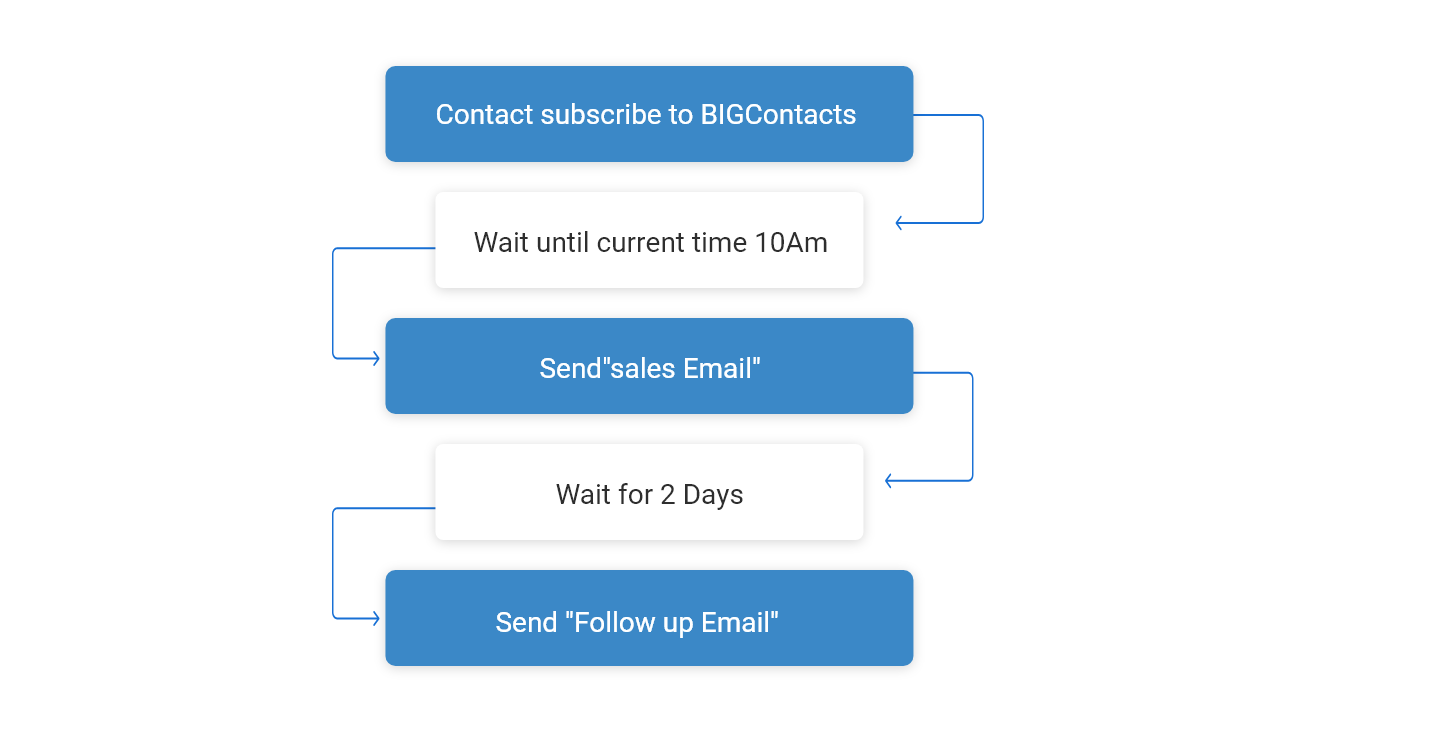
Invite prospects to share their thoughts and feedback about your products, services, or content. This not only provides you with valuable insights but also makes them feel heard and valued.
What is Opportunity?
An opportunity is a prospect that has progressed to the point where they are considering making a purchase. This is the stage where the potential customer has demonstrated a clear intent to buy, discussions about pricing, delivery, and specifics of the deal are underway, and it’s likely that a sale will be closed soon.
An opportunity represents a significant milestone because it signals a high likelihood of converting a prospect into a paying customer. At this juncture, a sales team’s focus shifts towards closing the deal, tailoring their efforts to meet the specific needs and concerns of the potential buyer.
Now, how do you identify an opportunity? Look for these key indicators:
- Defined Need: The potential customer has expressed a specific need or problem that your product or service can solve.
- Budget Approval: There’s confirmation that the prospect’s budget aligns with your pricing, indicating they can afford your offering.
- Decision-Making Authority: The individuals you are in contact with have the authority to make purchasing decisions, or you’ve been introduced to those who do.
- Timeline for Purchase: There is a clear timeline for the purchase decision, suggesting that the prospect is ready to move forward.
Stages of a Sales Opportunity
Understanding the stages of an opportunity can help you navigate the sales process more effectively, ensuring you’re taking the right actions at the right time to move towards a successful sale.
Here’s a breakdown of these key stages:
1. Identification
This initial stage involves recognizing that a prospect has a specific need or problem that your product or service can address. The prospect has shown enough interest and fits your buyer persona closely enough to be considered a potential sales opportunity.
To practically identify prospects, monitor interactions with your content and responses to marketing campaigns. Use a CRM software to track these interactions and flag individuals who engage frequently as potential sales opportunities.
Regularly reviewing this data can help you spot patterns and identify leads who are showing more than a passing interest.
2. Qualification
At this point, you evaluate whether the prospect has the potential to become a customer. Assess their budget, decision-making authority, need for your solution, and timeline for making a purchase. Leverage your CRM to segment leads based on these criteria.
Here’s a tip on how you can do it – set up automated workflows that score leads based on their actions (e.g., downloading a price list might increase a lead’s score). Use this information to prioritize follow-up efforts on those most likely to convert!

3. Needs Analysis
Here, you can use CRM analytics to dig deeper into the prospect’s specific needs, challenges, and goals. This stage is crucial for tailoring your pitch and offering to address the prospect’s situation precisely. Effective needs analysis involves asking probing questions and actively listening to the prospect’s responses.
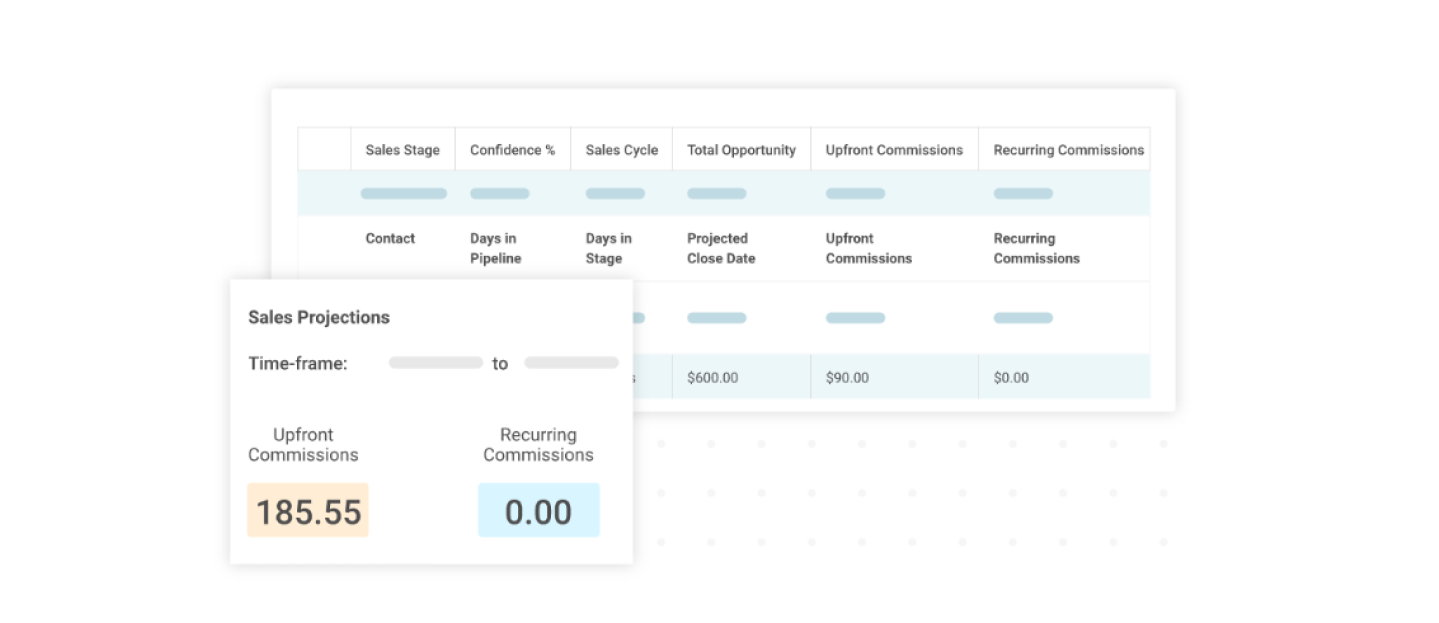
4. Proposal
Based on the information gathered during the needs analysis, you can now prepare and present a customized proposal that outlines how your product or service can meet the prospect’s needs. This proposal should detail the benefits, costs, and any other relevant information that will help the prospect make a decision.
5. Negotiation
Once the proposal is on the table, the negotiation phase begins. This can involve discussions about pricing, terms, and conditions of the sale. Flexibility and understanding of the prospect’s needs are key here, as well as clear communication about the value your solution provides.
6. Closing
The closing stage is where the deal is finalized. This could mean getting a signed contract, receiving a purchase order, or another form of commitment from the prospect to buy your product or service. Effective closing techniques are important to move the opportunity from negotiation to a successful sale.
7. Post-Sale
After successfully closing the sale, shift your focus to delivering the promised product or service and ensuring customer satisfaction. This stage is critical for building a long-term relationship, encouraging repeat business, and generating referrals. Follow-up regularly, address any issues that arise, and seek feedback to improve future sales efforts.
Why Is It Important to Understand the Difference and Accurate Categorization in the Sales Process?
Understanding the distinctions between leads, prospects, and opportunities is crucial for refining your sales strategy.
Imagine being able to discern, with precision, where each potential customer stands in their journey toward making a purchase. This clarity enables you to allocate your team’s time and resources wisely, ensuring you’re not just casting a wide net.
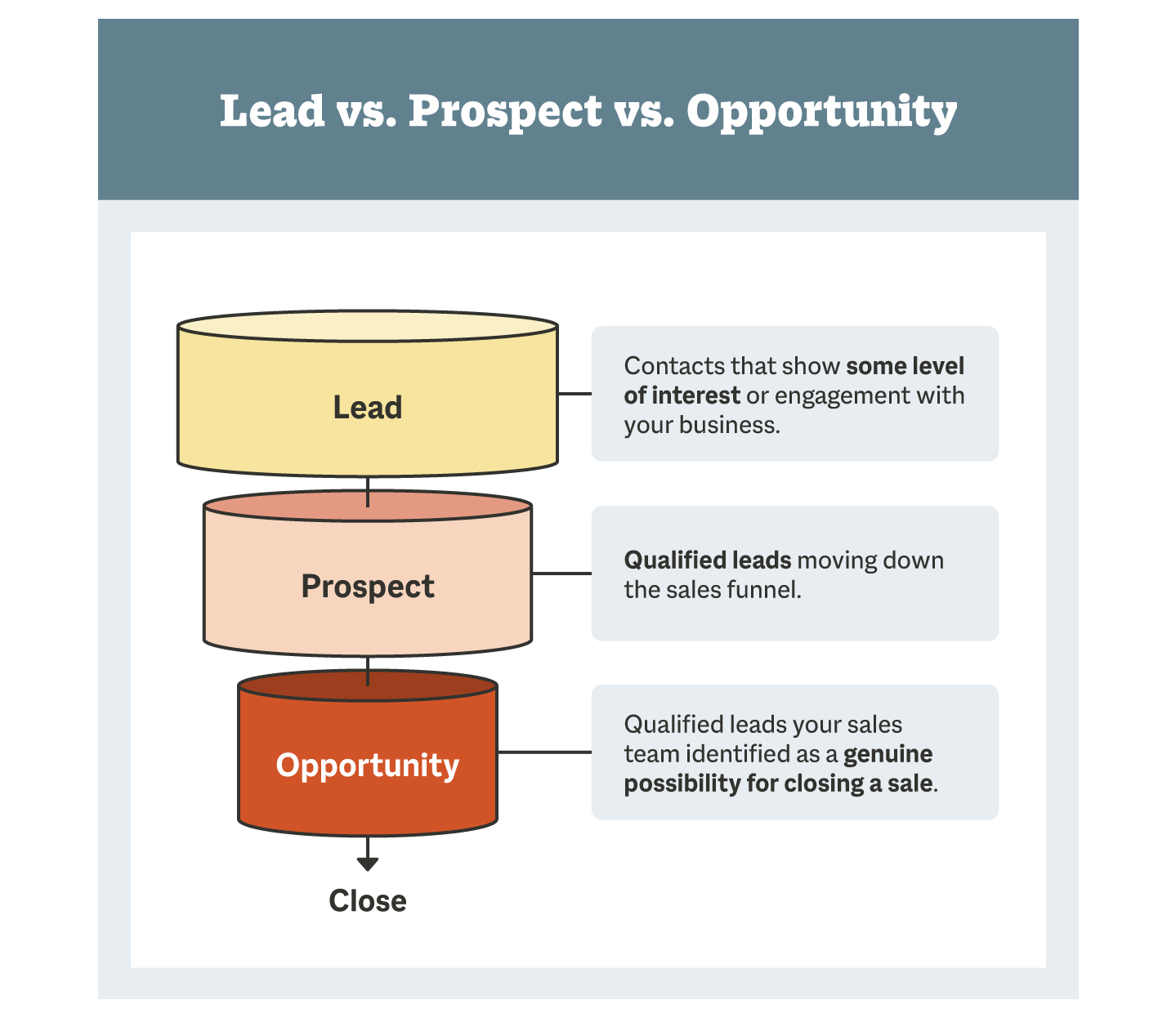
Tailoring your communication based on these stages means you’re addressing your audience’s specific needs and concerns, significantly enhancing your chances of conversion.
Recognizing and categorizing these stages accurately lets you:
Prioritize Your Efforts
Identifying leads, prospects, and opportunities allows you to allocate your resources and focus more efficiently. This strategic approach ensures that you invest time and energy where it has the greatest potential for returns.
Tailor Your Communications
Recognizing the stage of each potential buyer enables you to customize your messages and interactions. This targeted communication ensures that you provide information that is relevant and valuable to where they are in their decision-making process.
Improve Conversion Rates
By differentiating between these categories, you can apply the most effective strategies for advancing individuals through the sales funnel. This tailored approach significantly enhances your chances of converting interest into actual sales.
Enhance Forecasting Accuracy
A clear understanding of where individuals fall in the sales process aids in more accurate sales forecasting. This insight is invaluable for operational planning, setting achievable targets, and managing resources.
Elevate Customer Experience
When you know a potential buyer’s stage, you can offer support and information that meets their specific needs. This attentiveness improves the overall customer experience, fostering trust and satisfaction.
Nurture Future Opportunities
Not all leads or prospects are ready to purchase immediately. Proper categorization ensures that you maintain engagement with potential customers who may need more time, nurturing a relationship that could lead to future sales.
Lead vs Prospect
In the sales world, the terms “lead” and “prospect” are often used interchangeably, but they represent distinct stages in the customer journey. Here’s a closer look at how these two stages compare and contrast.
Lead: The Initial Spark of Interest
A lead is someone who has shown some level of interest in your product or service. This interest is usually expressed through actions like subscribing to a newsletter, downloading a whitepaper, or attending a webinar.
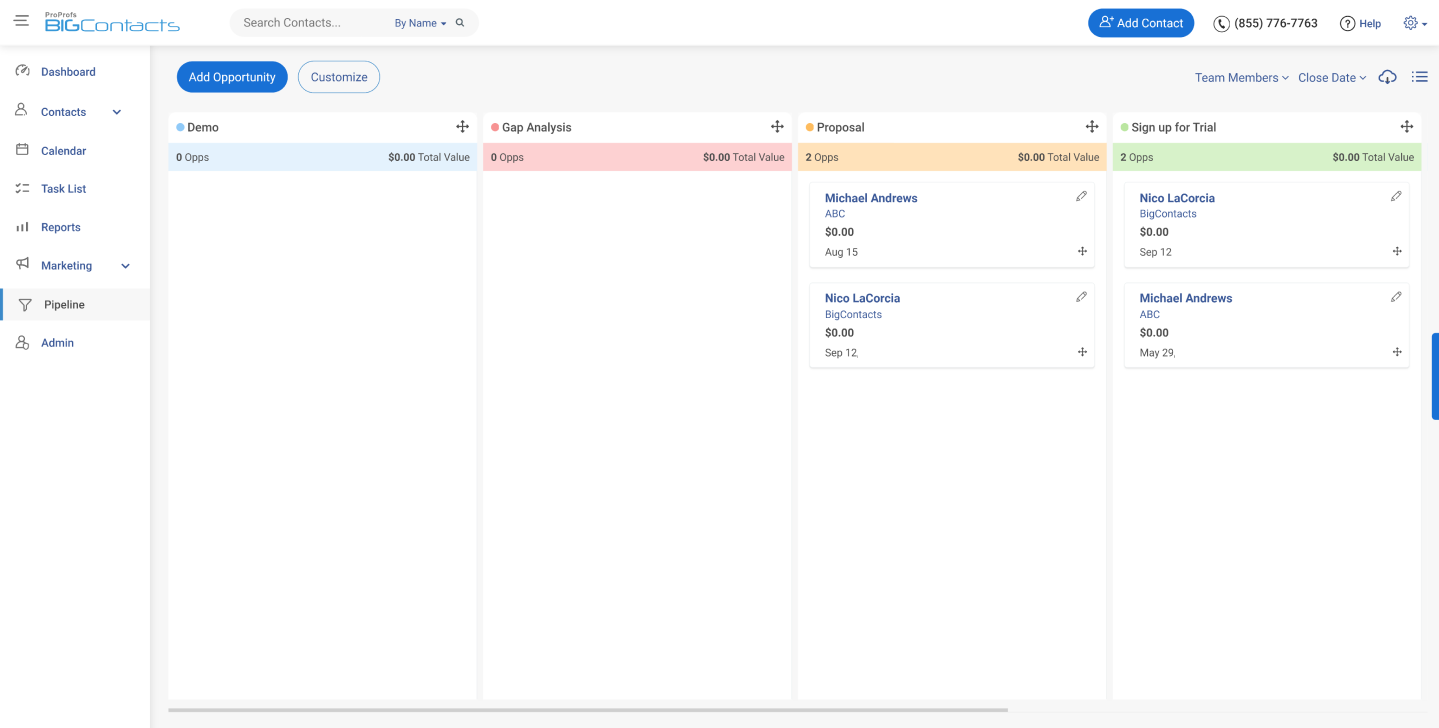
At this stage, the individual might not have a detailed understanding of what you offer or a defined intention to purchase. Leads are essentially potential prospects; they are at the top of the sales funnel, and much about them remains to be qualified.
Prospect: A Step Closer to a Sale
A prospect is a lead that has been qualified and identified as having the potential to become a customer. This qualification process involves determining whether the lead fits your target market criteria, has the authority and budget to make a purchase, and has expressed a genuine interest in proceeding further down the sales funnel.
In essence, prospects are leads who have been vetted and are now considered potential buyers.
Key Differences
- Interest vs. Intent: Leads have shown interest, but prospects have moved beyond this to indicate an intent to buy.
- Qualification: Leads have not been qualified; prospects have been assessed and meet specific criteria that make them potential customers.
- Communication: Communication with leads is more about education and awareness, while with prospects, it becomes more personalized, focusing on how your solution meets their specific needs.
Engaging with leads involves nurturing them with relevant content and information to build awareness and trust. The goal is to guide them to the point where they can be qualified as prospects.
With prospects, the engagement is more focused on addressing their specific questions and concerns, demonstrating the value of your solution, and moving toward a sales discussion.
Comparison Table: Lead vs. Prospect
Feature |
Lead |
Prospect |
| Definition | Someone who has shown interest in your product or service | A lead that has been qualified as having the potential to become a customer |
| Stage in Sales Funnel | Top of the funnel | Middle of the funnel, moving towards the bottom |
| Interest | General interest in the topic or solution | Demonstrated intent to purchase |
| Qualification | Not yet qualified; information is limited | Has been qualified based on specific criteria (e.g., budget, need, authority) |
| Communication Focus | Education and awareness | Personalized engagement, addressing specific needs and concerns |
| Goal | To nurture and educate, leading to qualification | To persuade and convert into a paying customer |
Lead vs Opportunity
As opposed to a lead, which is simply an initial step that sets the stage for future interactions, an opportunity is a lead that has passed through the sales funnel to a stage where it can be actively considered a potential sale.
This stage means that the lead has passed certain criteria that indicate a strong likelihood of moving forward toward making a purchase. These criteria often include having the budget, authority, need, and a specific timeline for the purchase—commonly known as BANT criteria.
Opportunities are further down the sales funnel and require more direct and focused sales efforts aimed at closing the deal.
Key Differences:
- Stage of Engagement: Leads are at the initial stage of engagement, while opportunities are leads that have been qualified as being closer to a purchasing decision.
- Sales Funnel Position: Leads are at the top of the sales funnel, indicating a wider pool of potential customers. Opportunities are further down the funnel, indicating a higher likelihood of converting into sales.
- Qualification: Leads may not yet have been assessed for their potential to buy, whereas opportunities have been qualified based on specific criteria.
Comparison Table: Lead vs. Opportunity
Feature |
Lead |
Opportunity |
| Definition | An individual or organization showing initial interest in your product or service | A lead that has been qualified as a potential sale based on specific criteria |
| Stage in Sales Funnel | Top of the funnel, indicating initial interest | Lower in the funnel, indicating readiness to consider a purchase |
| Engagement Level | Early engagement, focusing on awareness and education | Advanced engagement, with focused efforts on closing the sale |
| Qualification | Not yet qualified; interest is known but not vetted | Qualified based on budget, authority, need, and timeline (BANT) |
| Communication Focus | Broad, aiming to educate and build awareness | Targeted, aiming to address specific needs and persuade |
| Goal | To nurture and qualify for potential sales readiness | To close the deal and convert into a paying customer |
Transforming leads into opportunities involves nurturing them with targeted communication, providing valuable information, and gradually building a relationship.
Remember to eliminate invalid contacts and add valuable information such as carrier info, line type, and geolocation to finetune your communication attempts. You can use a phone number validation tool to achieve the same.
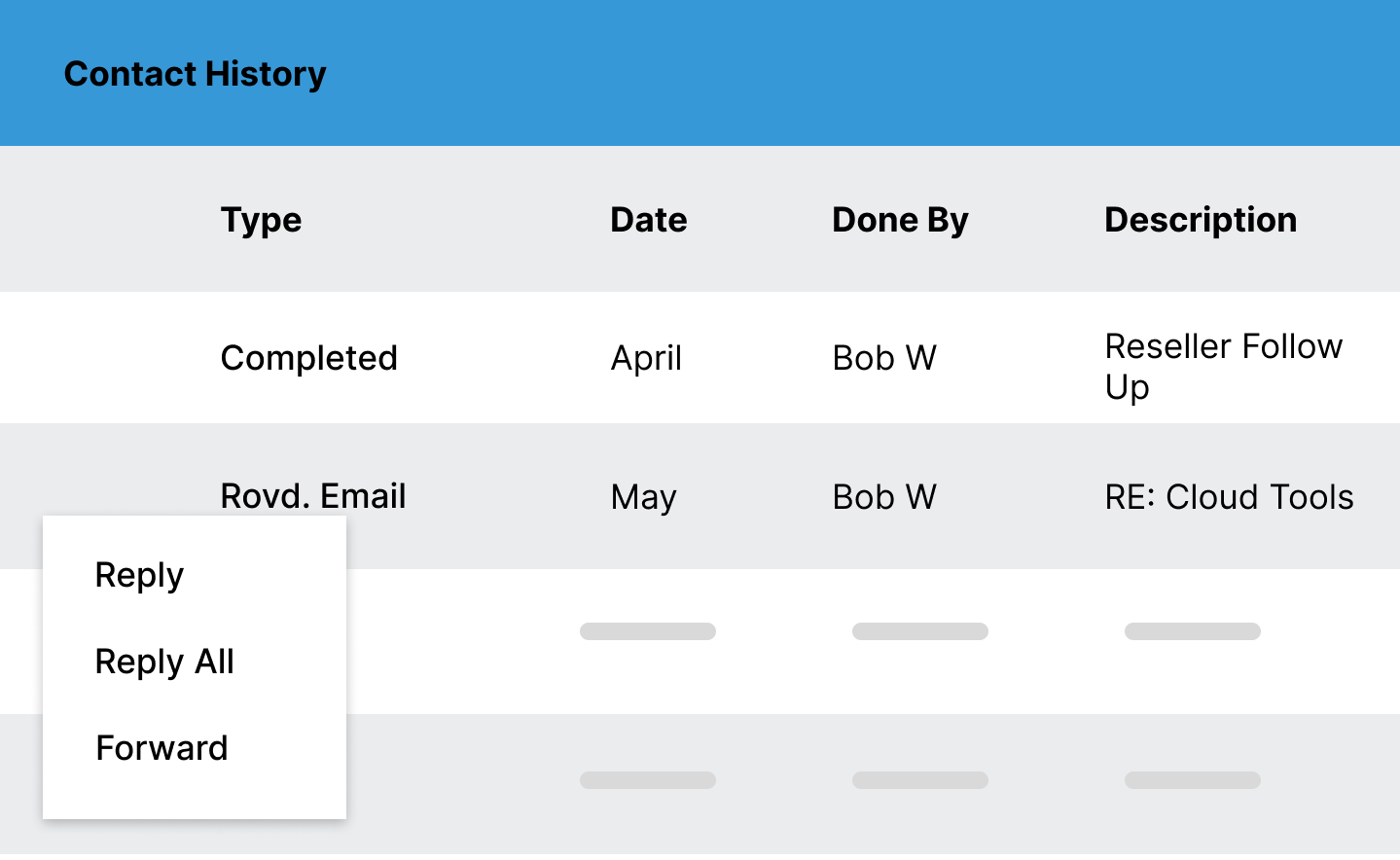
This process includes understanding their needs, offering solutions, and eventually guiding them to a point where they are considered ready and able to make a purchase.
Prospect vs Opportunity
Two critical stages in the journey of moving potential buyers from initial awareness to making a purchase are – identifying a prospect and recognizing an opportunity. While these terms are closely related and sometimes confused, they represent distinct stages in the sales funnel, each requiring a specific approach.
Prospect: Qualified Interest Ready for Engagement
A prospect is someone who has shown interest in your product or service and has been qualified as a potential customer. This means they have passed an initial evaluation indicating that they fit your target market’s profile, have a potential need for your solution, and are likely to consider a purchase.
Prospects are at a pivotal point where personalized engagement and relationship building become crucial. The focus is on understanding their specific needs, challenges, and objectives to position your offering as the ideal solution.
Opportunity: A Prospect Nearing Decision
An opportunity represents a prospect that has moved further down the sales funnel and is seriously considering making a purchase. At this stage, the sales team has usually had several interactions with the prospect, gaining a deep understanding of their requirements and how the product or service can meet them.
Opportunities are marked by a higher level of engagement, discussions about pricing and implementation, and the potential customer’s clear intent to buy in the near future.
Transitioning a prospect to an opportunity involves deepening the relationship, providing tailored solutions, and demonstrating the unique value of your offering. It’s about moving from a general discussion of needs to a concrete proposal that addresses those needs directly.
Key Differences:
- Engagement Depth: While prospects require engagement to identify their needs and potential fit, opportunities demand more detailed discussions focusing on the specifics of closing a sale.
- Sales Funnel Stage: Prospects are in the middle of the sales funnel, having been identified as fitting the target market but not yet fully committed to buying. Opportunities are closer to the bottom of the funnel, indicating readiness to make a purchasing decision.
- Focus of Interaction: Interaction with prospects is aimed at establishing value and fit, whereas with opportunities, the interaction is more about negotiating terms and finalizing the deal.
Comparison Table: Prospect vs. Opportunity
Feature |
Prospect |
Opportunity |
| Definition | A qualified lead who fits your target market and shows potential interest in your offering | A prospect who has shown clear intent to buy, with discussions focusing on purchase specifics |
| Stage in Sales Funnel | Middle of the funnel, where qualification and engagement deepen | Closer to the bottom of the funnel, indicating readiness for purchase |
| Engagement Level | Focused on identifying needs, challenges, and the fit of the solution | Centers on pricing, implementation, and resolving final objections |
| Qualification | Based on potential need and fit within the target market | Involves a clear intent to purchase, with budget, timeline, and authority assessed |
| Goal | To establish value and build a relationship with the potential buyer | To close the deal and convert the prospect into a paying customer |
How Do You Turn a Lead Into a Prospect?
Transforming a lead into a prospect is a critical transition in the sales process. It begins with qualification, a step where you assess whether a lead has the potential to become a customer.
Ask yourself: Do they align with your ideal customer profile? But remember, this isn’t just about ticking boxes based on demographic information or behaviors; it’s about discerning whether there’s a genuine need your product or service can fulfill.
Here’s a detailed breakdown of the steps involved in the process of nudging a lead up the sales funnel to a prospect:
1. Initial Contact and Engagement
Reach out to the lead with personalized communication based on the initial interest they showed. This could be a follow-up email, a phone call, or a direct message on social media, thanking them for their interest and offering additional valuable information related to their initial interaction with your brand.
2. Educate and Provide Value
Provide the lead with educational content that addresses their needs and interests. This could include blog posts, case studies, eBooks, or webinars that not only inform but also showcase the benefits of your solutions. The goal here is to establish your brand as a helpful and knowledgeable authority in your field.
3. Assess Needs and Challenges
Engage in a deeper conversation with the lead to understand their specific needs, challenges, and goals. This can be achieved through direct communication channels like phone calls or face-to-face meetings. Asking open-ended questions and actively listening to their responses will help you tailor your pitch to their unique situation.
4. Demonstrate How Your Solution Fits
Once you have a clear understanding of the lead’s needs, present your product or service as the solution. Highlight how your offering can solve their problems or help them achieve their goals. Be sure to address any objections or concerns they may have, showing empathy and expertise.
5. Follow-Up Consistently
Regular follow-ups are key to keeping the lead engaged throughout their decision-making process. Use a mix of communication methods, such as emails, phone calls, and social media interactions, to stay in touch and provide ongoing value. Timely and thoughtful follow-ups demonstrate your commitment to helping them find the right solution.
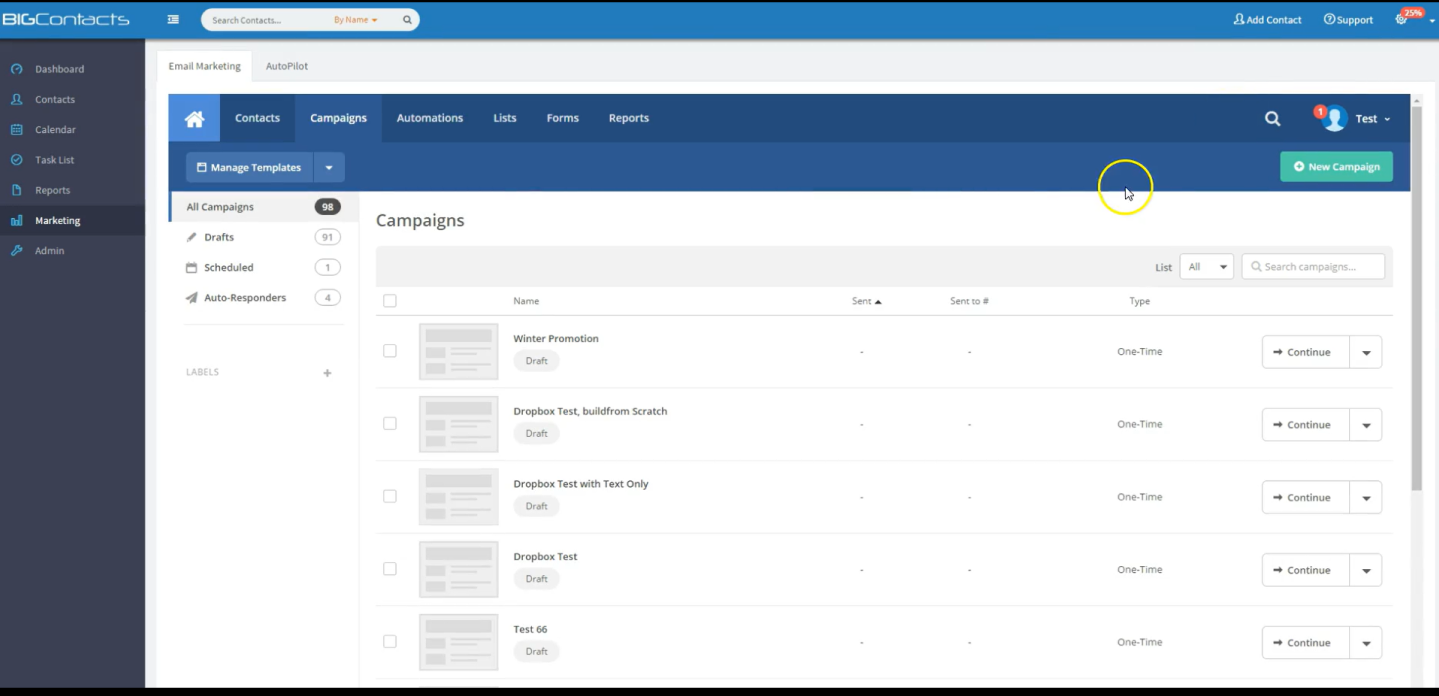
6. Invite to Take the Next Step
Encourage the lead to take a more significant action, such as signing up for a free trial, scheduling a product demo, or attending a detailed consultation. This step is critical in moving them from mere interest to considering a purchase, officially turning them into a prospect.
Turning a lead into a prospect requires showing genuine interest in their success, understanding their needs, and demonstrating the unique value your solution can offer. By following these steps, you not only increase the likelihood of conversion but build a strong foundation for a lasting customer relationship as well.
How to Convert Prospects to Opportunities?
Converting prospects into opportunities is a pivotal moment in the sales process that requires a strategic blend of understanding, engagement, and timing.
Follow these tips to successfully guide your prospects towards being purchasers:
Sales Pipeline Management
Sales pipeline management plays a pivotal role in converting prospects into opportunities by providing a clear, organized framework for engagement. It enables you to:
- Keep track of each prospect’s journey and readiness to advance.
- Segment and tailor your approach to meet the unique needs of each prospect.
- Continuously provide value that aligns with their evolving needs and interests.
- Identify and engage with the right decision-makers at the right time.
Sales pipeline is the key cornerstone of making a conversion. With a careful observation and management of the structure that your leads follow, you can ensure a more strategic, informed approach to nurturing them into prospects, and ultimately convert them to customers.
This not only improves the likelihood of conversion but also streamlines your sales process, making it more efficient and productive in cultivating opportunities and driving growth.
For best results, use a sales lead tracking software with automation capabilities to eliminate repetitive manual data entry and follow-ups.
Deepen Your Interaction
At this stage, it’s vital to have a comprehensive understanding of your prospect’s needs, challenges, and goals. This involves going beyond surface-level interactions and engaging in deeper conversations. Use these discussions to gather insights that will help you tailor your solution to their specific situation.
Showcase Tailored Solutions
Once you have a clear grasp of what your prospect needs, present your product or service as the solution to their problems. Highlight how your offering uniquely addresses their challenges and can help them achieve their goals. This is your chance to differentiate yourself from the competition by demonstrating a tailored fit between their needs and your solution.
Provide Value
Adding value at every interaction is key. This could mean sharing case studies of how you’ve solved similar challenges for other customers, offering insightful content that addresses their specific concerns, or providing a demo that showcases the benefits of your solution in action. The goal is to reinforce the prospect’s perception of your offering as the right choice.
Engage Decision-Makers
Ensure you’re engaging with the right people within the organization – those who have the authority to make buying decisions. Tailor your communication to address the priorities and concerns of these decision-makers, and be prepared to answer their questions and overcome objections.
Clarify the Next Steps
Make the path forward clear by outlining the next steps in the decision-making process. Whether it’s scheduling a more detailed presentation, discussing terms, or setting up a trial, being proactive about the next steps can help maintain momentum and guide the prospect closer to a decision.
Overcome Objections
Be prepared to address and overcome any objections or concerns the prospect may have. This requires not just a deep understanding of your product or service but also the ability to listen actively and empathize with the prospect’s situation. Addressing these concerns effectively can move the prospect from consideration to decision.
Follow Up Persistently
80% of sales are made after the fifth contact. This shows how crucial consistent and thoughtful follow-up is. It keeps the conversation going, demonstrates your commitment to meeting their needs, and keeps your solution top of mind. Tailor your follow-up strategy to each prospect, balancing persistence with respect for their decision-making process.
Create a Sense of Urgency
Where appropriate, create a sense of urgency to help the prospect move towards a decision. This could involve highlighting limited-time offers, pointing out the cost of inaction, or emphasizing the immediate benefits of your solution.
Transform Your Leads to Prospects, and Prospects to Opportunities with BIGContacts
The journey through the sales funnel is a testament to the value of understanding, engagement, and persistence. The journey from initial contact to closing a deal is intricate, and this is where a robust CRM tool like BIGContacts can make a significant difference.
With features like automated follow-ups, personalized communication templates, and detailed customer insights, It simplifies the process of nurturing leads into prospects and converting prospects into opportunities, allowing you to focus more on what truly matters—building relationships and closing sales.
Like me, if you want to make this journey smoother, ensuring that every lead, prospect, and opportunity is given the attention and care they need to thrive, this tool is all you need.
After all, it’s not just about making sales— this process is about genuinely connecting with people, understanding their needs, and providing them with value. And that’s what makes the difference between a one-time deal and a long-term relationship.
Test the software today to see if it’s the right fit for you!
Lead, Prospect, and Opportunity: FAQ’s
What are the characteristics of a prospect?
A prospect is more than just a lead; they have been qualified based on specific criteria indicating they are likely to become customers. Characteristics of a prospect include:
- Demonstrated interest in your product or service.
- A need or problem that your offering can solve.
- The budget to make a purchase.
- Decision-making authority within their organization or for themselves.
- A timeframe for making a purchasing decision.
What are the common characteristics of sales opportunities?
Sales opportunities are prospects at an advanced stage, showing clear signs they are close to making a purchasing decision. Their common characteristics include:
- A well-defined need for your product or service.
- Acknowledgment of your solution as a potential fit.
- Engagement in detailed discussions about pricing, implementation, or customization.
- The authority and readiness to buy within a specific timeframe.
- Initiation of purchase-related processes, such as a request for a proposal or final negotiations.
FREE. All Features. FOREVER!
Try our Forever FREE account with all premium features!






